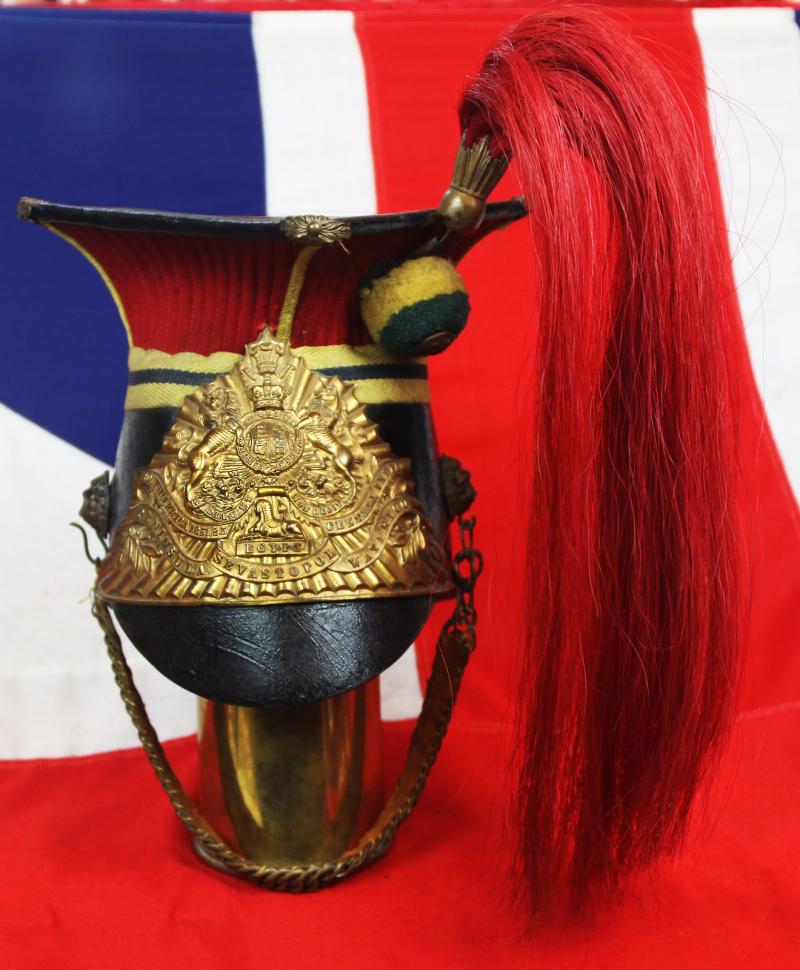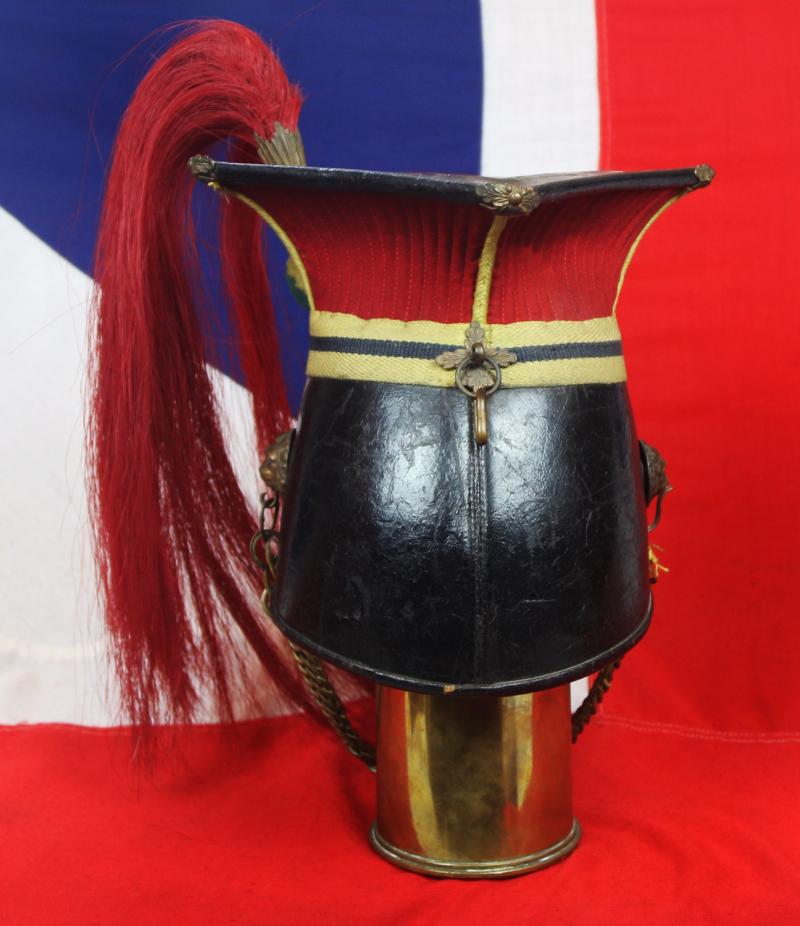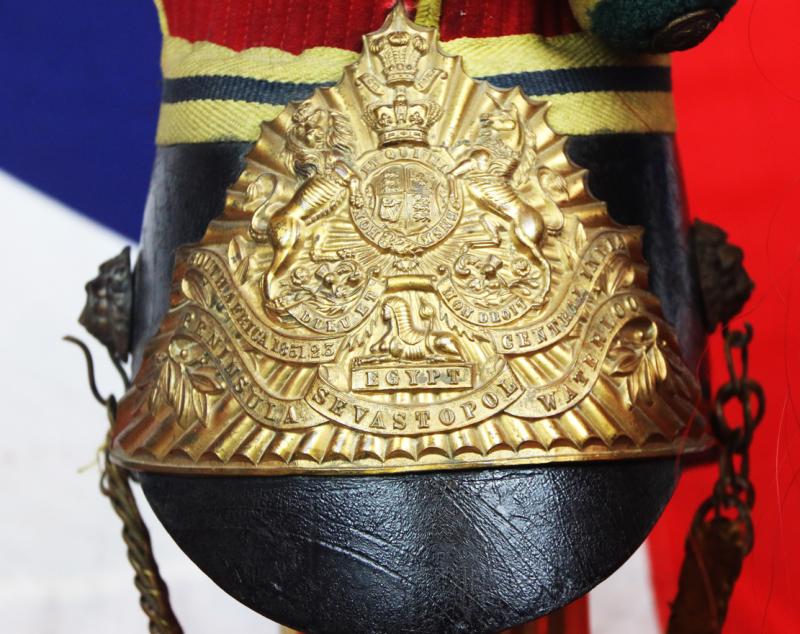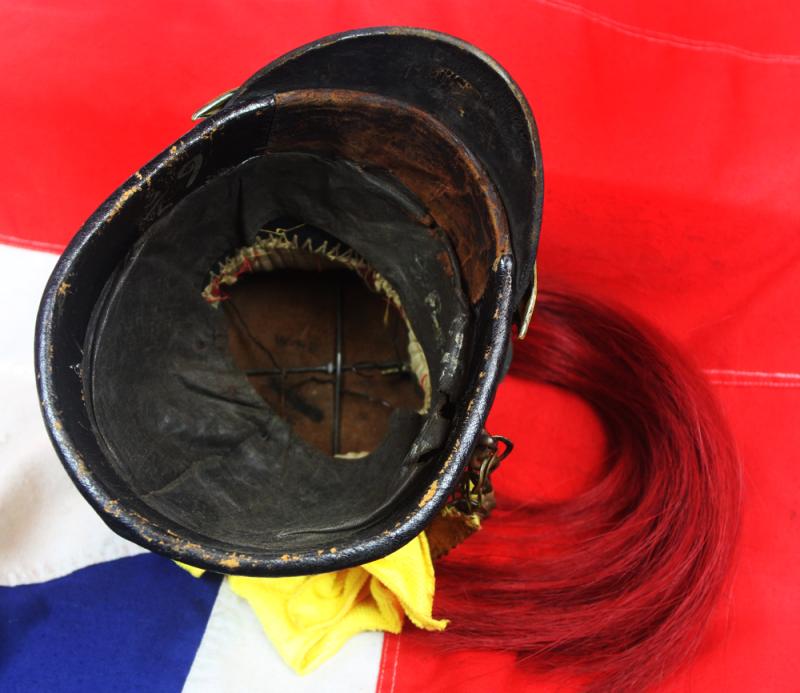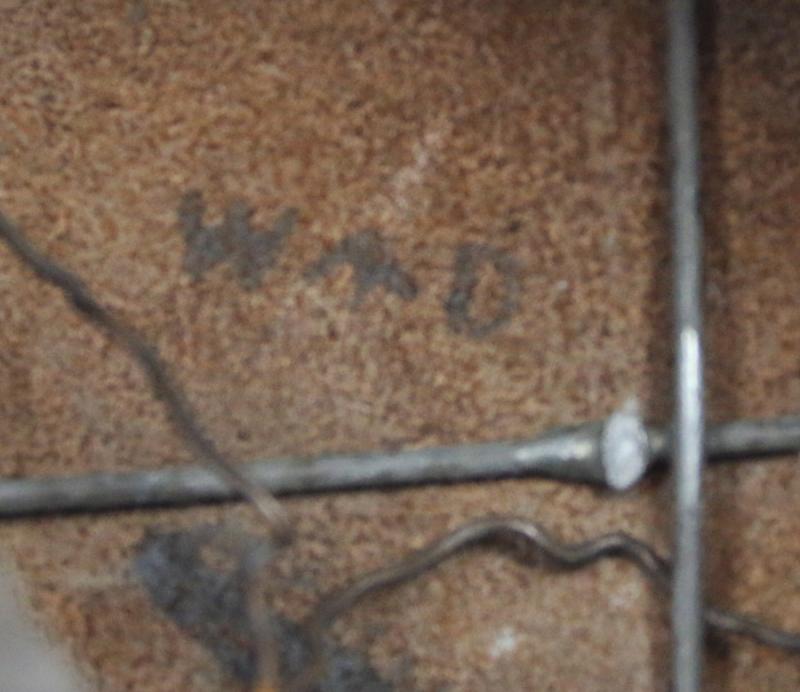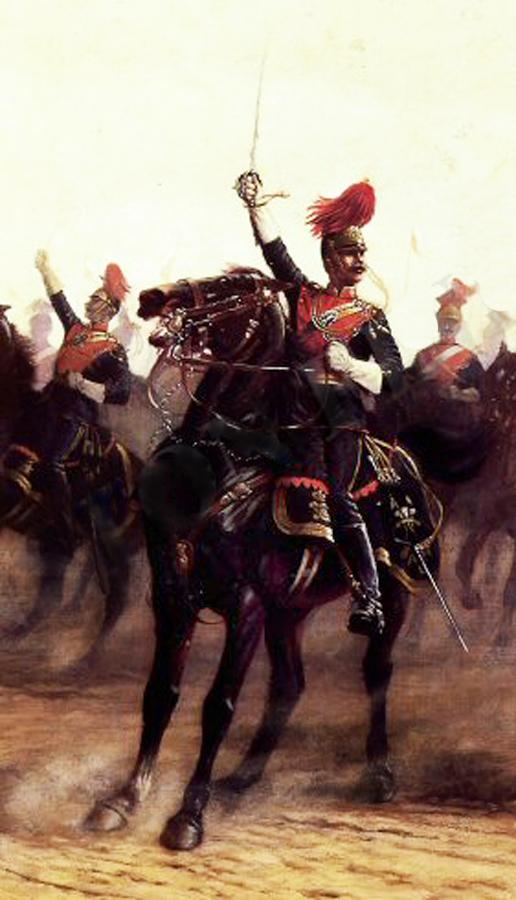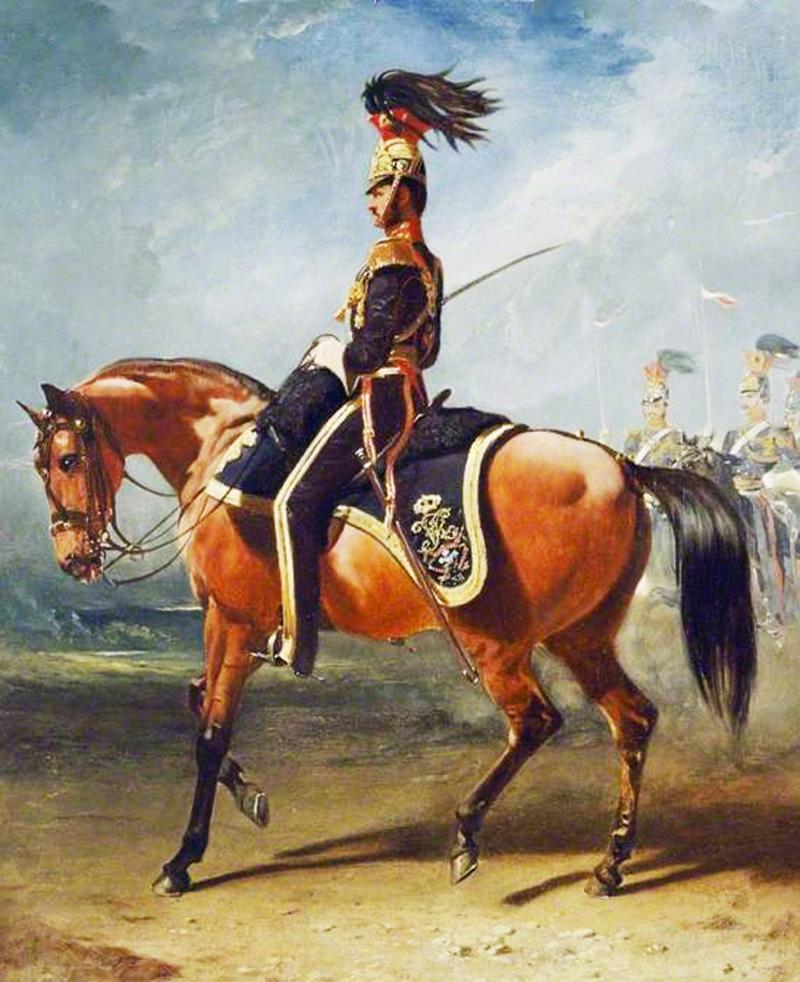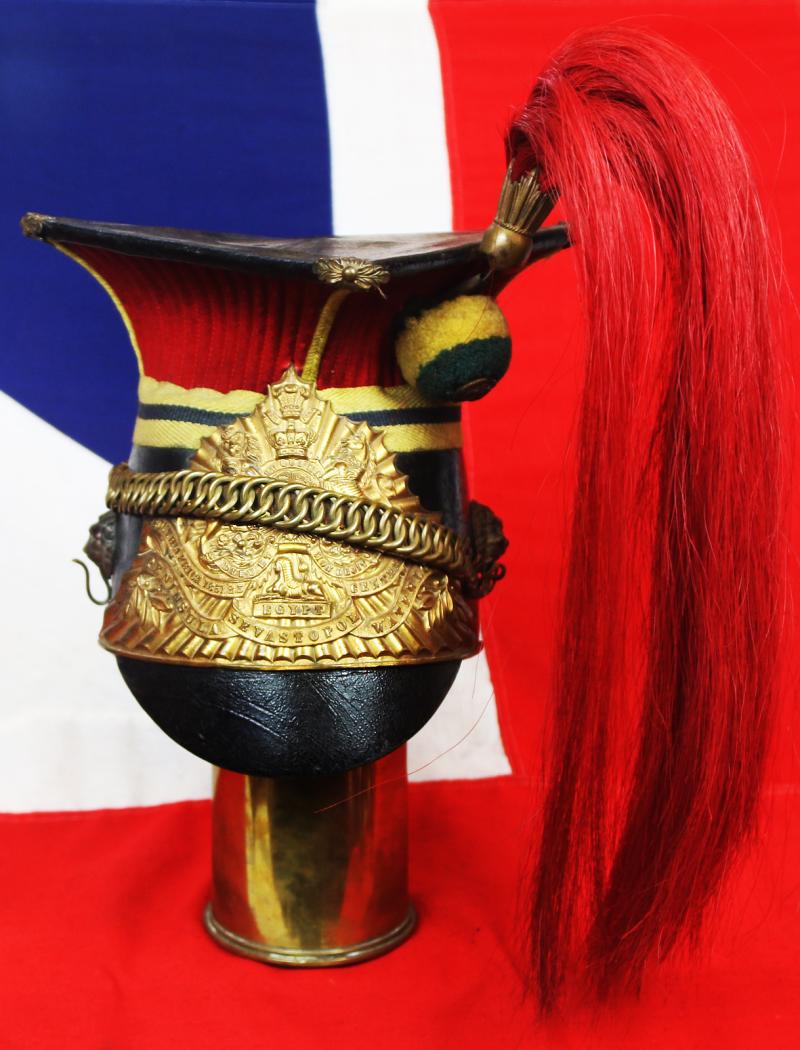A Superb, Victorian, 12th 'Prince of Wales' Royal Lancers Czapka
This Victorian helmet, built of hard leather, features a large brass helmet plate showing the multiple Battle honours of the 12th Lancers. It features a horse hair plume and comes with brass interlocking ring chin scales backed by leather overall in really nice condition for age and use. Traditionally this Regiment of Lancers all had bright Red Horse Hair plumes
In 1816, the 12th Light Dragoons were armed with lances after the cavalry of Napoleon's Army had shown their effectiveness at Waterloo and were thus re-titled the 12th (The Prince of Wales's) Regiment of (Light) Dragoons (Lancers). In 1855, it reinforced the Light Cavalry Brigade in the Crimea after the Charge of the Light Brigade at the Battle of Balaclava. The Regiment was to take part in the Indian Mutiny Regiments where they formed part of the Saugur Field Force which helped to pacify Central India. For their services in the Mutiny the 12th received the Battle Honour ‘Central India’. In 1861, the regiment was renamed 12th (The Prince of Wales's) Royal Regiment of Lancers. It was stationed in India between 1857 and 1860 in response to the Indian Rebellion and in Ireland from 1865 to 1870, before fighting in the Second Anglo-Afghan War in the late 1870s.
Boer War
The 11th Earl of Airlie, who was killed while commanding the regiment at the Battle of Diamond Hill in the Second Boer War
The regiment was deployed to South Africa for service in the Second Boer War in October 1899, and took part in the relief of Kimberley and the ensuing Battle of Paardeberg in February 1900. The commanding officer of the regiment, the 11th Earl of Airlie, was killed at the Battle of Diamond Hill in June 1900. Following the end of the war in 1902 they went to India. Almost 530 officers and men left Cape Town aboard SS Lake Manitoba in September 1902, arriving at Bombay the following month and was then stationed at Ambala in Punjab.
"The 12th Lancers at Moy, France, on 28 August 1914" by George Wright
The regiment, which had been based in Norwich at the start of the war, landed in France as part of the 5th Cavalry Brigade in the 2nd Cavalry Division in August 1914 for service on the Western Front. On 28 August 1914, 'C' Squadron of the 12th Lancers, led by Lieutenant-Colonel Frank Wormald, made a successful charge against a dismounted squadron of Prussian Dragoons at Moÿ-de-l'Aisne in the Great Retreat. The 9th/12th Royal Lancers celebrated Mons/Moy Day annually, which commemorated the last occasions on which each predecessor regiment charged with lances.
The regiment's battle honours up to the end of WW1 were as follows:
Early Wars: Egypt, Salamanca, Peninsula, Waterloo, South Africa 1851-2-3, Sevastopol, Central India, Relief of Kimberley, Paardeberg, South Africa 1899–1902
The Great War: Mons, Retreat from Mons, Marne 1914, Aisne 1914, Messines 1914, Ypres 1914 '15, Neuve Chapelle, St. Julien, Bellewaarde, Arras 1917, Scarpe 1917, Cambrai 1917 '18, Somme 1918, St. Quentin, Lys, Hazebrouck, Amiens, Albert 1918, Hindenburg Line, St. Quentin Canal, Beaurevoir, Sambre, France and Flanders 1914–18
This headdress developed initially as a square-topped variant of a shako. In its early, compact form from 1784 onwards the czapka was introduced by Austrian uhlans, during the time Galicia was under Habsburg rule. Its use was spread from eastern Europe by the Polish Legion, fighting for the French in the Napoleonic Wars, and became popular not only among Napoleon's French and allied forces, such as Westphalia, Bavaria, Saxony, and Naples, but also among the armies of his enemies. The Duchy of Warsaw used them for infantry and artillery units, but otherwise they were only ever used for uhlan units.
After the Polish lancers proved their effectiveness during the Napoleonic Wars, armies across Europe quickly adopted the concept of the lancer regiments, complete with the czapka as their headdresses.
Several versions of lancer caps were used by the British regiments of lancers from throughout the 1830s and 1840s. The 1846 dress British Army regulations included the following description: “Cap-cloth; colour of the facings, eight inches and three quarters deep in front, nine inches and a half at back, and the top nine inches and a half square; gold cord across the top and down the angles; on left side a gold bullion rosette, with embroidered V.R., on blue velvet; round the waist a band, two inches wide, of gold lace, with a blue stripe; in front a gilt ray plate, with silver Queen’s arms and regimental badges; peak and fall of black patent leather, braided with gold; gilt chain, fastening to lion’s heads at the sides.”This was the cap that was used by the lancer regiments in the famous Charge of the Light Brigade during the Crimean War, but it was not the most commonly encountered version. This was the 1856 pattern of lancer cap and subsequent versions. As with the German models, over time the height of the British lancer cap was reduced, until it was just six and half inches high in the front and eight and a half inches at the top. From 1856 onward, feathers were generally worn on officers’ helmets, while other ranks wore a horsehair plume; the colour of each was determined by the regiment. And while the British lancers took part in combat in many campaigns after the Crimean War, none of these were in Europe,
Lancer regiments in the British Army continued to wear czapkas (described as "lance caps") for full dress until 1939 and the modern Royal Lancers still retains this historic headdress for its Lancer Honour Guard. Along with the traditional double-breasted plastron-fronted lancer jacket, it is also still worn by the band of the Royal Yeomanry.
Code: 25409
1850.00 GBP


